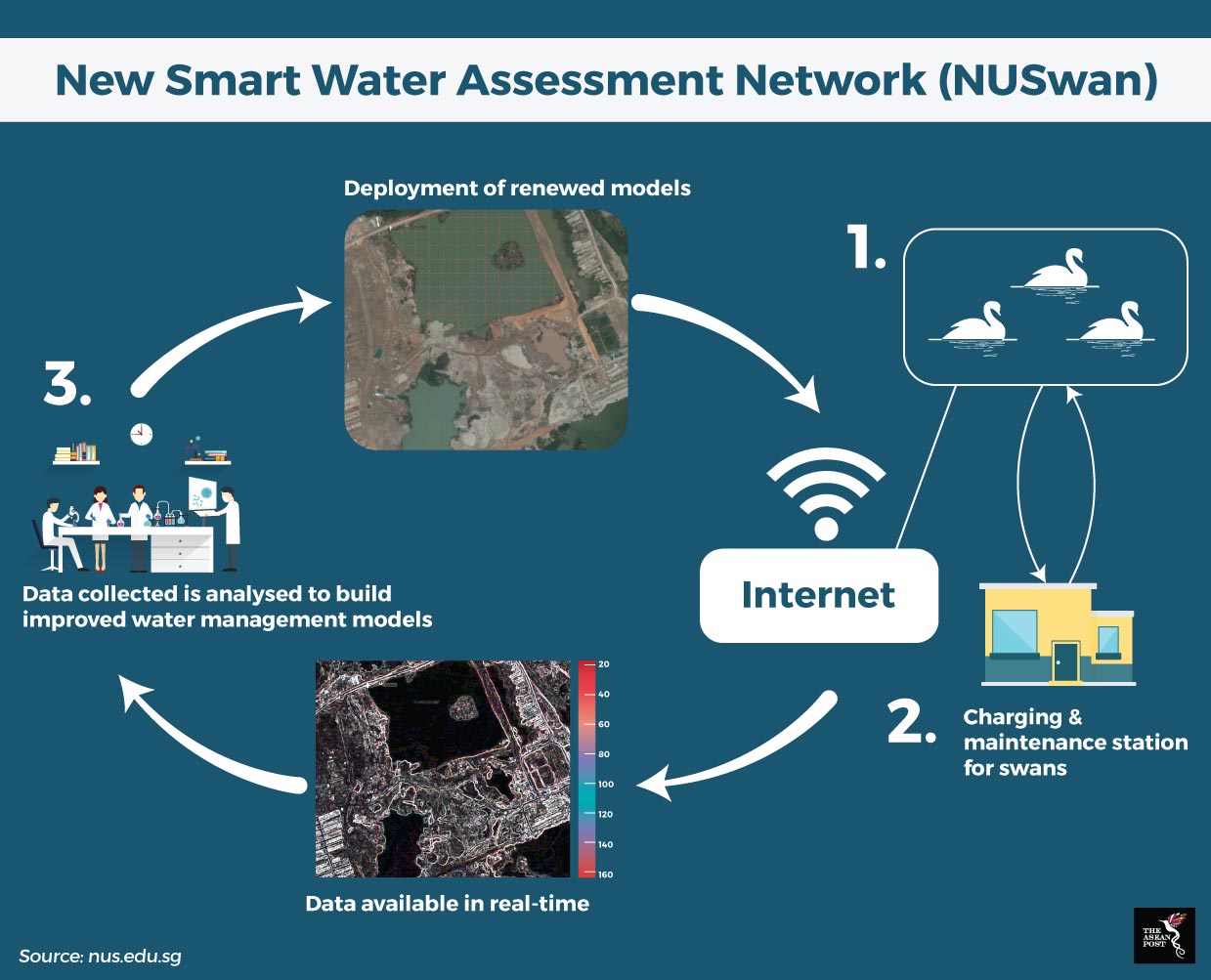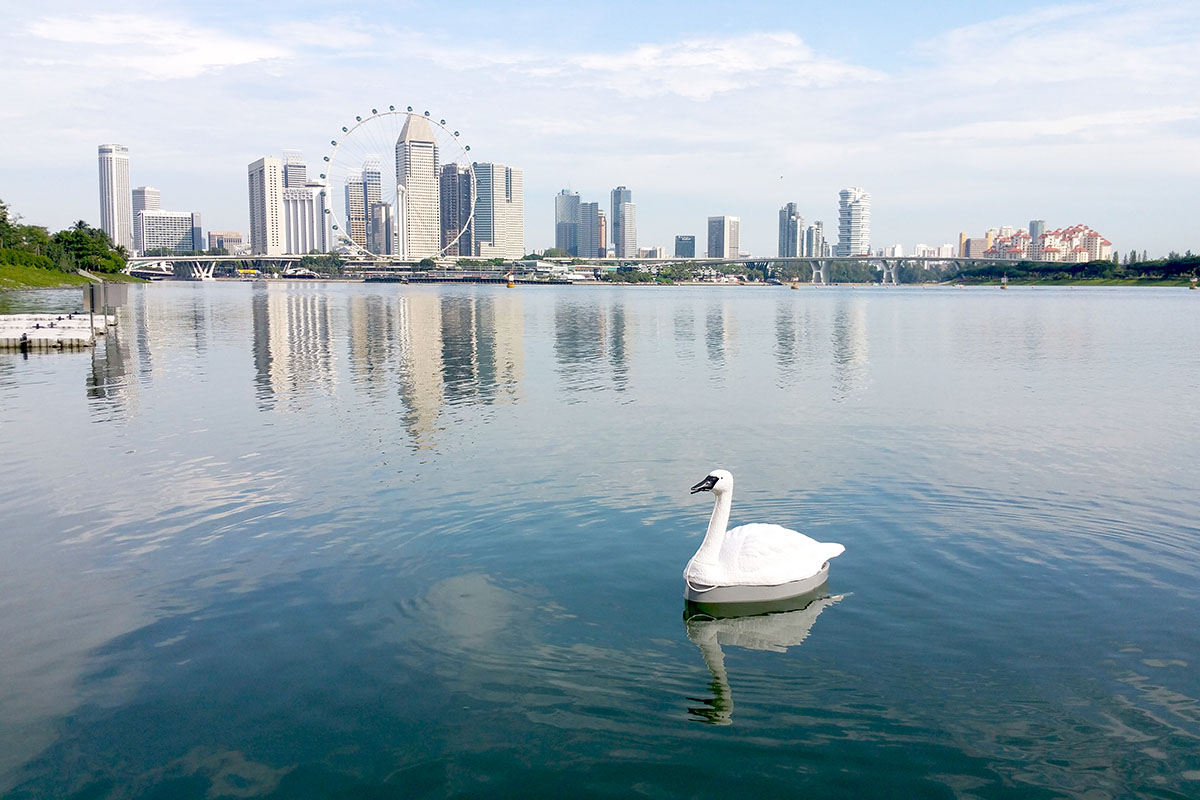Maintaining water quality, especially in urbanised landscapes, is highly challenging since water bodies are exposed to varying sources of pollutants from urban run-offs and industries. Hence, proper water management is of utmost importance to a nation’s development. Without properly managed water, many areas of the economy will be affected due to the exacerbation of poor population health, loss of jobs and even hygiene issues.
Singapore recently tackled its issue of water management from a new perspective, through the use of Internet of Things (IoT) technology by introducing robotic swans in their reservoirs via the SWAN project (Smart Water Assessment Network), in January. Researchers from National University of Singapore (NUS) developed an innovative system for monitoring pollutants that leads to better water management and sustainability.
How does the robotic swan work?
The NUSwan, short for New Smart Water Assessment Network is an innovative concept on spatial-temporal water quality monitoring. The NUSwan was built as a comprehensive solution to maximise use of resources and cost effectiveness, so that data can be gathered in real time, with minimal utilisation of human labour.
NUS explained that the robotic swans are “…a simple yet powerful tool to observe the water environment. Its ability to collect data according to a directed mission in real-time allows for interactive sampling at any location of interest. It has the capability of performing simultaneous multi-node, high speed sensing for observing concentration gradients for better characterization and detection of time varying hotspots.”

Currently, the Public Utilities Board (PUB) has deployed eight robot swans in their various reservoirs. Each swan will transmit live results to the PUB using wireless technology. The robot swans will be able to monitor the republic’s fresh water pH levels, dissolved oxygen, turbidity and chlorophyll, all of which are fundamentals used to determine overall water quality.
In terms of maintaining and making the robotic swans sustainable, Professor Mandar Chitre, Department of Electrical and Computer Engineering, NUS stated in an e-mail with The ASEAN Post that the swans, “…use electric power and are therefore non-polluting. They can be charged using solar panels, if desired, making them even "greener". The swans are designed to be autonomous and low-maintenance, so as to be operationally sustainable in the long run. Some routine maintenance is required to ensure smooth operation.”
The IoT solution
The use of advanced technologies for the environment such as IoT in the form of robots, is not new globally. Just last year, a similar project was deployed in Switzerland whereby a robotic eel, known as the Envirobot reports on the water quality of Lake Geneva.
From sensors to artificial swans, robotics and automated systems can help minimise human error and redeploy manpower to more productive tasks. As for the case of Singapore, the PUB started their long-term computerisation plan for its systems since the 1980s. It has since completed many automation projects, and is currently developing more.
Some advancements in the pipeline include robots that can cope with different tunnel conditions and an unmanned aerial vehicle (UAV) system to inspect and maintain the Deep Tunnel Sewerage System. The usage of IoT will aid in providing a decision support tool that will help in network management and early detection.
Other countries in Southeast Asia could follow suit in adopting the use of IoT for optimised water management. Countries that are dependent on the Mekong River, especially, should deploy these technological strategies to monitor water quality and aid in early detection of pollution.
According to a 2016 report by HSBC and WWF, fishing and aquaculture in the Mekong Delta employ over 2.8 million people, which is 10 percent of Vietnam’s labour force. The report also stated that fish harvested from the Mekong Basin every year represent about 18 percent of the world’s freshwater fish yield making it the biggest inland fishery in the world. Mekong fishery sectors in Thailand and Vietnam add well over US$750 million to their economies, respectively.
Hence, it is of utmost importance for the Mekong-dependent countries to use such IoT-based technologies as the riverine communities rely on the basin for their fisheries and agriculture, mostly as their source of income.
Mandar also reiterated that other countries in the region should look into such developments as “…water is a precious resource to sustain us. Technologies like this provide means to ensure safety and cleanliness of drinking water much beyond what manual sampling can do. They allow potential problems to be detected early, and acted upon, and so are important in the long run.”
Recommended stories:
